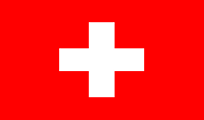Graubünden


A clear top dog dominates the Bündner Herrschaft: the Pinot nero.
Neuchâtel


The Three Lakes Region is one of the most beautiful vineyard landscapes in Switzerland.
Ticino


The Bordeaux variety Merlot found its second home in Switzerland's sunniest region.
Valais


Sun-kissed Valais is one of the most important wine-growing regions in Switzerland.
Vaud


The Chablais grape from the canton of Vaud produces refreshing, pleasing white wine.
A small country, great diversity: over 150 grape varieties are cultivated in Switzerland.
As small and, by international standards, rather insignificant as Switzerland may be as a wine country, its diversity makes it one of the greats: the oenological treasure trove of more than 150 grape varieties cultivated by local winemakers. Viticulture has a tradition in six regions: Valais, Ticino, German-speaking Switzerland, the Three Lakes Region, Vaud and Geneva. Not only do the regions differ in terms of their red and white varieties, terroir, climate and cultural customs, but each region is also a pearl in its own right: breathtaking steep slopes in the Vaudois Lavaux with a view of Lake Geneva, impressive vineyards along Lake Biel and Lake Neuchâtel, a picturesque sea of grapevines in the Bündner Herrschaft …
There are around 15,000 hectares of vineyards between Lake Geneva and Lake Constance. It is not known exactly how many winemakers make up this considerable area. Industry experts estimate that there are 7,000 full-time winegrowers, 2,500 of whom also press wine themselves. Viticulture in Switzerland has a long tradition, dating back to 800 BC.
Hardly any other country has such a wide range of grape varieties as Switzerland. Well over 150 are authorised or under observation for testing purposes. This is surprising, as phylloxera, which was introduced from America at the end of the 19th century, destroyed almost all the vineyards. As a result, winemakers planted their plots primarily with easy-care varieties that promised high yields, such as Fendant (Chasselas), Petit Arvine or Pinot noir.





Validate your login